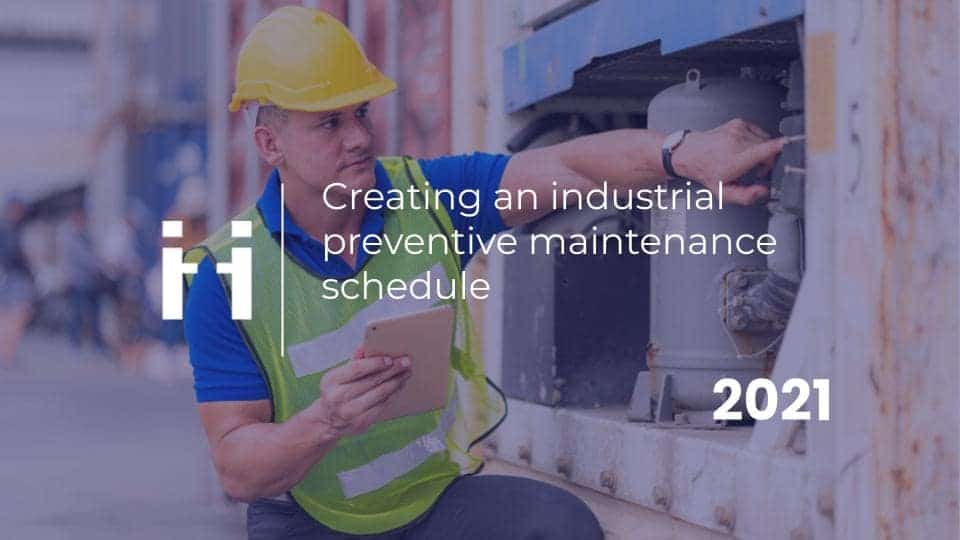
Share this article
Share this article
Are you interested in building an effective industrial preventive maintenance schedule? If your answer is yes, you are in the right place as you will learn everything about this topic. Setting up a reliable preventive maintenance program is crucial for any business as it helps prevent unplanned breakdowns.
Apart from that, it minimizes unnecessary expenses that may occur due to sudden equipment failure. With a good preventive maintenance plan, you can save a lot of money to use it for other parts of the business.
One thing to note is that starting and implementing preventive maintenance is not hard, especially if you have the right tools and resources. But first, it is important to look at what PM means and when it should be performed before creating one. Keep reading to gain more insight.
A preventive maintenance schedule or preventative maintenance program involves a set of well-planned maintenance activities that are carried out regularly to prevent assets failure. The main goal of this maintenance strategy is to ensure equipment is in good condition to boost productivity in the workplace.
Some activities performed during a preventive maintenance program may include inspection, correction, detection, and prevention. These maintenance practices come with plenty of advantages, which are;

Industrial preventative maintenance schedule uses a more systematic approach to ensure business assets are working well. Unlike reactive maintenance, which is usually performed only when equipment has broken down, preventive maintenance guarantees that assets will continue working until the next inspection is conducted.
This type of maintenance strategy equipment or machinery is usually checked after a given period. For example, it could be weekly, after 3 months, or even 6 months. In short, maintenance occurs as regularly as equipment needs it. This can be determined by the manufacturer’s instructions or how often the equipment is used.
Building a customized industrial preventive maintenance schedule is one of the best things you can do for your company or organization. It will help you save money, increase business productivity and avoid unexpected machinery failure during working hours. Here is a step-by-step guide on how to create your preventative maintenance schedule.
The first step is to sort your business assets based on their value and maintenance needs. The best way to do this is to create a list of all the equipment in the company. This will help you sort them one by one, and you will not leave out the most important details about the assets.
These are some of the questions you should ask yourself when looking at each business asset;
The above questions will help you understand which assets in the organization need more care and which ones can wait. It is not necessarily that you do this with all assets. You can start with a few equipment depending on your budget.
After making a list of all the equipment you will include on your preventive maintenance plan, the next step is to check the history of all the assets on your list. You should look at how many times they have failed in the past and if they were instances of downtime.
This data will help you know how much you will spend on each asset and how often you will need to maintain them. Apart from that, look at the age of machinery, how long it has been working, and its depreciation rate. All that information will give you an idea of what to do next.

In the third step, gather all the information about every business asset based on the original equipment manufacturer (OEM) instructions. OEM is a manual that is usually provided by the equipment manufacturer explaining the usage, spare parts, and basic maintenance activities that need to be performed on the equipment.
Finding out about this information will ease your work when creating a maintenance checklist for each equipment in the organization. It will also help you know the tools you may need during maintenance and if some can be improvised.
Alternatively, you can talk to maintenance technicians to know what you will need and how best to maintain your assets. They might give you other tips that will cut down maintenance costs.
After gathering and analyzing all the data collected, you should begin organizing the information to develop a reliable maintenance schedule. Write down the tasks that need to be performed on every asset and how often the tasks will be done. This will help technicians know what to do when the due date arrives. It will also save time and allow business operations to continue as normal.
Once you have planned everything successfully, you can put the maintenance strategy into practice, which will take you to the next step, tracking progress.

The last step is to track progress after implementing the maintenance program in your organization. As you and your team get used to monitoring and tracking progress, you can also be making adjustments to improve the maintenance strategy.
The good news is that CMMS software can help you quickly and easily track assets’ progress. Always make changes based on the results you get, and do not pay too much attention to equipment that is not experiencing any issues.
If your assets work well without experiencing any breakdown, then you should know that the maintenance plan is working. This means that you should expand it to other equipment in the business.
Building an industrial preventive maintenance schedule is not as hard as you may have thought. You are only required to collect the necessary data about equipment then put together the information you’ve gathered to create a maintenance plan. Hopefully, this guide will help you create one for your business.
Free E-book available now!